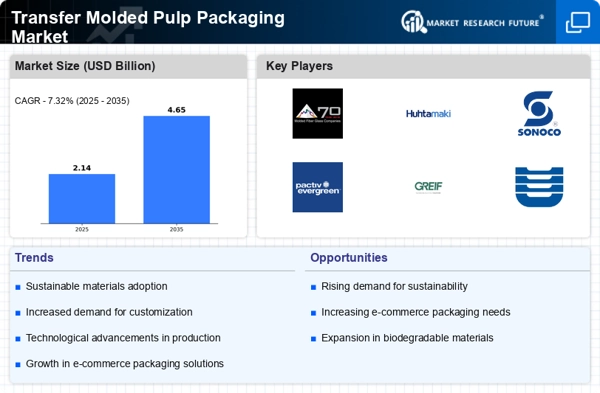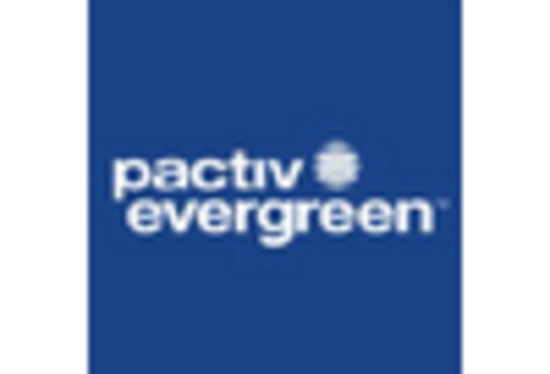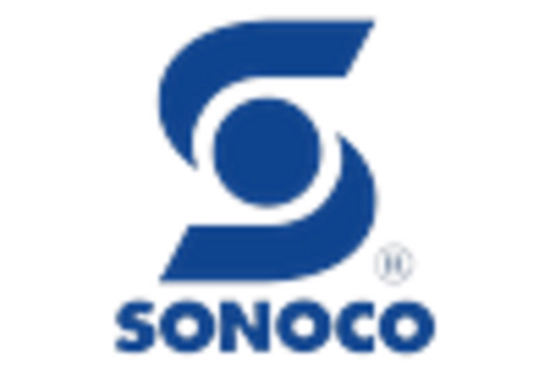The Transfer Molded Pulp Packaging Market is currently characterized by a dynamic competitive landscape, driven by increasing consumer demand for sustainable packaging solutions and stringent environmental regulations. Key players such as Huhtamaki (FI), Sonoco Products Company (US), and Smurfit Kappa Group (IE) are strategically positioning themselves through innovation and regional expansion. Huhtamaki (FI) focuses on enhancing its product portfolio with eco-friendly materials, while Sonoco Products Company (US) emphasizes operational efficiency and supply chain optimization. Smurfit Kappa Group (IE) is actively pursuing mergers and acquisitions to bolster its market presence, collectively shaping a competitive environment that prioritizes sustainability and operational excellence.
The market structure appears moderately fragmented, with several players vying for market share. Key business tactics include localizing manufacturing to reduce costs and enhance responsiveness to regional demands. This strategy not only optimizes supply chains but also aligns with the growing consumer preference for locally sourced products. The collective influence of these key players fosters a competitive atmosphere where innovation and sustainability are paramount, potentially leading to a more consolidated market in the future.
In August 2025, Huhtamaki (FI) announced the launch of a new line of biodegradable molded pulp packaging products aimed at the food service industry. This strategic move underscores the company's commitment to sustainability and positions it to capture a growing segment of environmentally conscious consumers. By investing in biodegradable materials, Huhtamaki (FI) not only enhances its product offerings but also strengthens its brand reputation in a market increasingly focused on eco-friendly solutions.
In September 2025, Sonoco Products Company (US) unveiled a partnership with a leading technology firm to integrate AI-driven analytics into its production processes. This initiative is expected to enhance operational efficiency and reduce waste, aligning with the company's goals of sustainability and cost-effectiveness. The integration of advanced technologies may provide Sonoco with a competitive edge, allowing for more precise forecasting and inventory management, which is crucial in the fast-evolving packaging landscape.
In July 2025, Smurfit Kappa Group (IE) completed the acquisition of a regional competitor, significantly expanding its market footprint in Europe. This acquisition is likely to enhance Smurfit Kappa's capabilities in producing innovative molded pulp solutions, thereby increasing its competitive advantage. The consolidation of resources and expertise from the acquired company may lead to improved product development and a stronger market position in the sustainable packaging sector.
As of October 2025, the Transfer Molded Pulp Packaging Market is witnessing trends that emphasize digitalization, sustainability, and the integration of advanced technologies. Strategic alliances among key players are increasingly shaping the competitive landscape, fostering innovation and collaboration. The shift from price-based competition to a focus on technological advancement and supply chain reliability is evident, suggesting that future competitive differentiation will hinge on the ability to innovate and adapt to changing consumer preferences.

















Leave a Comment